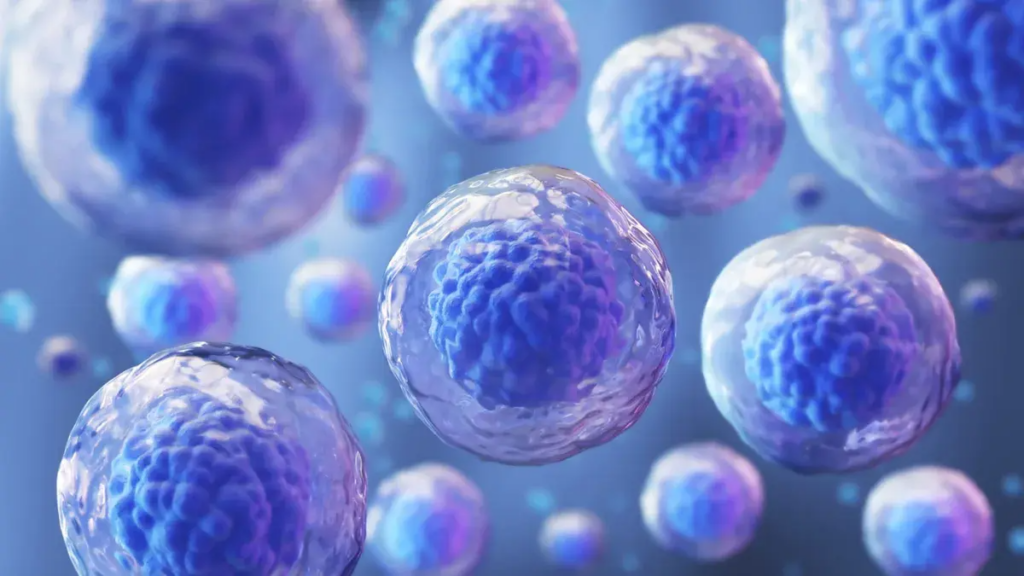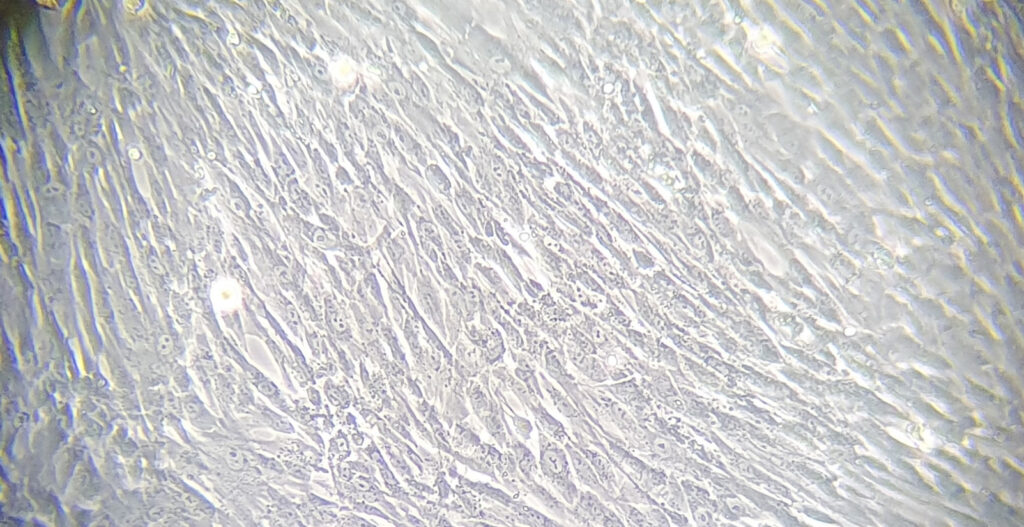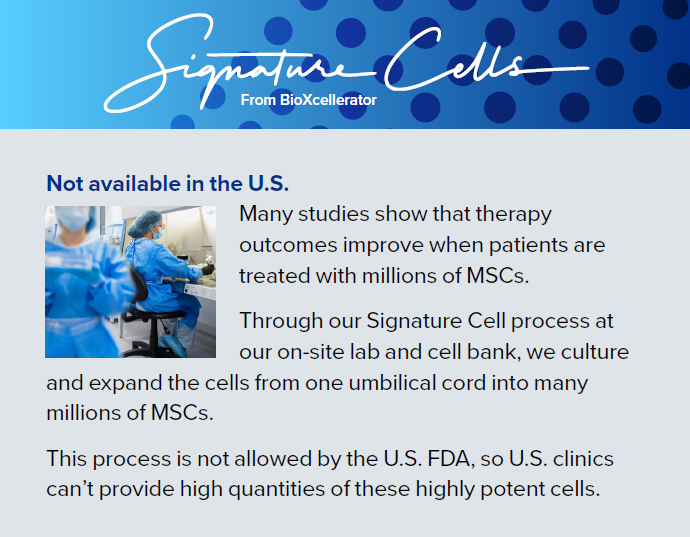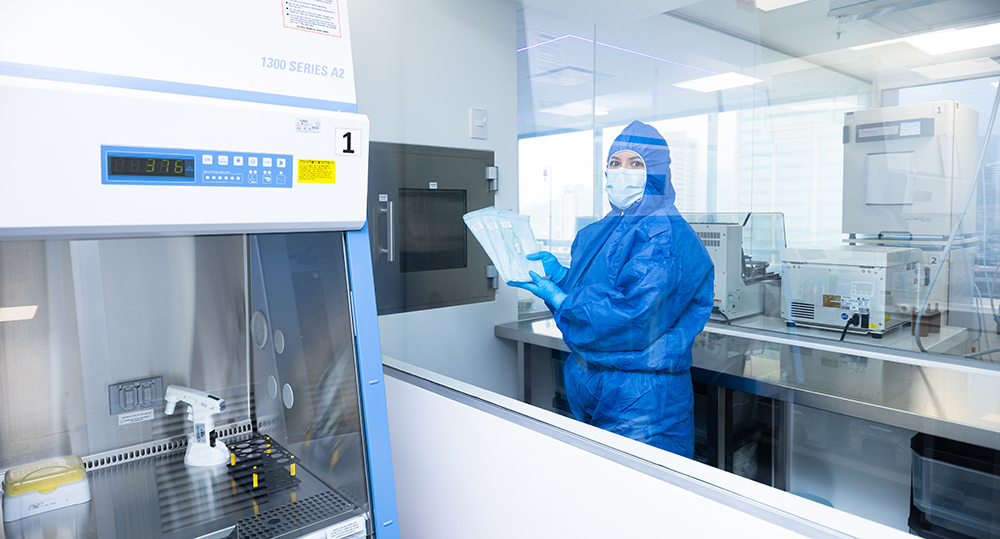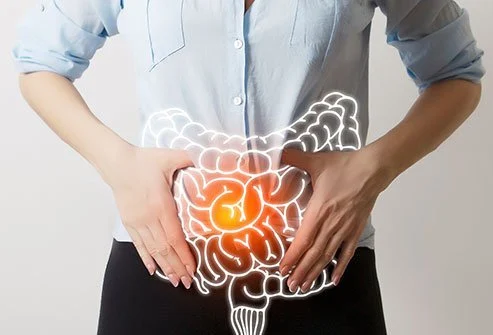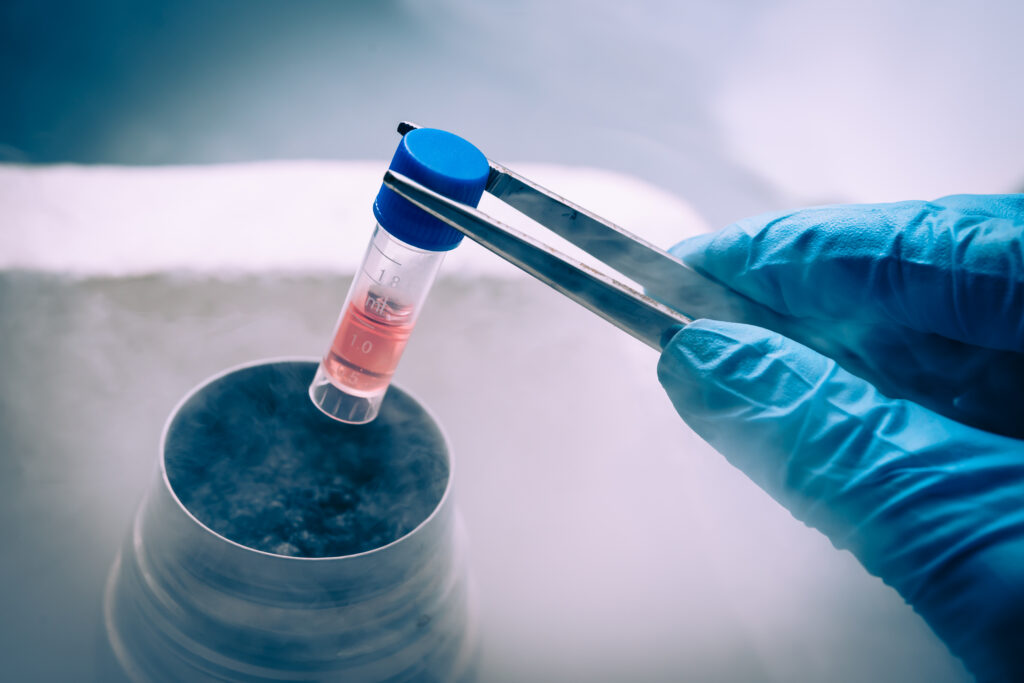Regenerative Medicine and Advanced Stem Cell Therapy
How advanced stem cell therapies amplify your body’s natural healing processes to promote healing and treat a wide range of diseases and injuries.
Why do so many patients travel outside the U.S. for stem cell therapy at clinics like BioXcellerator? And why are these treatments not available in the U.S.—especially as more research than ever shows that stem cell therapy, a type of regenerative medicine, can be highly effective for treating a wide range of diseases and injuries?
In this guide, you’ll learn about:
1.) How stem cell therapy works—taking advantage of the body’s natural healing processes—to not only ease symptoms but also to reduce inflammation as well as promote healing.
2.) Different types of cells, and why some are more potent than others, and the importance of both quality of cells and quantity used for treatment.
3.) The importance of selecting a clinic with the best protocols for processing cells.
4.) Conditions that can be treated and details on treatment procedures.
5.) You’ll also discover how stem cell therapy can optimize overall health, boost performance and energy, and help you enjoy a more active life.
Contents
A guide to regenerative medicine and stem cell therapy
1. Welcome to BioXcellerator
2. Why choose stem cell therapy
3. How stem cell therapy works
4. High-potency cells for more effective treatment
5. Our state-of-the-art lab and cell bank
6. Conditions and diseases we treat at BioXcellerator
7. Even more overall health benefits
8. Precise treatment protocols for specific conditions
9. Exacting standards to assure high quality, potency, and viability of cells
10. Additional cutting-edge treatments for even better health
11.Backed by scientific research
12. A global reputation for expertise
13. Frequently asked questions
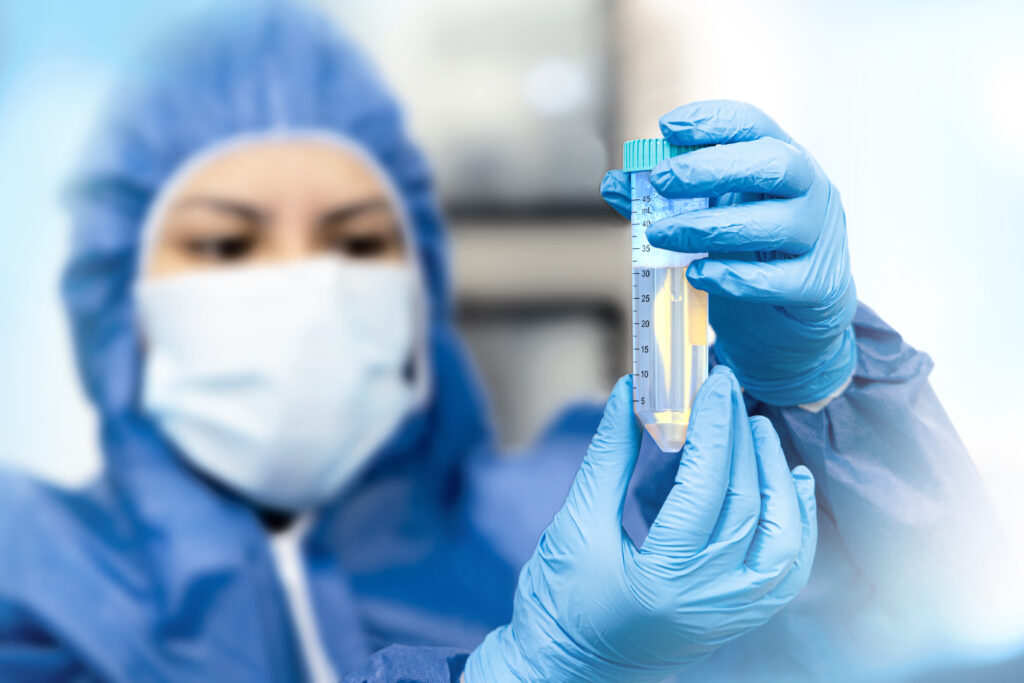
Why choose stem cell therapy
Healthier cells for a healthier body—based on the body’s natural healing process
Even though progress in the science of medicine continues to grow more rapidly, many treatments are still based on two main approaches—medications and surgery. Now there’s another approach to treatment that focuses on what makes us healthy human beings—our cells. We all have trillions of cells of many types that perform various functions and communicate with other cells to repair damage, fight disease, and keep us healthy. This is an ongoing process that you don’t even notice. Until we get older, of course. As we age, our cells age, too. And the body may not have enough cells to continue to repair itself. Stem cell therapy is a new approach based on research into regenerative medicine.
For some conditions, it’s a more natural alternative to surgery or medications—not available at U.S. clinics.
Research shows that specific types of cells—mesenchymal stem cells (MSCs)—demonstrate healing properties that boost the body’s natural repair processes. These cells home in on injured or diseased tissue and signal other cells in the body to promote healing. An infusion of millions of fresh allogeneic Wharton’s jelly mesenchymal stem cells (WJ-MSCs) derived from donated umbilical cords can delay or even prevent need for surgery—and does not cause significant side effects common to many medications.
How stem cell therapy works
The key? Balancing inflammation and immunity to restore natural processes and promote healing
We treat many different diseases, injuries, and disorders—each with various symptoms and health effects. But one issue common to many conditions is excess inflammation that can prevent healing and interfere with immunity. For example, one of the leading causes of back pain for millions of patients is a disorder known as degenerative disc disease—a condition that affects the discs in the spine.
Other conditions we treat include:
- Autoimmune disease
- Cosmetic and anti-aging
- Crohn’s disease
- Multiple sclerosis (MS)
- Orthopedic injuries
- Osteoarthritis
- Spinal cord injuries
- And many others
All can cause harmful inflammation
Although these conditions differ, one common aspect is too much inflammation—at the site of an injury or damage and throughout the body.
Some inflammation is normal. It’s the body’s natural signaling system for healing itself. But excess inflammation not only causes acute and chronic pain, it can prevent healing, cause poor immunity, accelerate aging, and even damage healthy tissue.
From a pro-inflammatory to an anti-inflammatory environment

Excess inflammation is caused in part by an imbalance of cytokines—proteins that regulate inflammation.
Some cytokines are pro-inflammatory, while others are anti-inflammatory. Mesenchymal stem cells secrete growth factors and other molecules that signal the body’s own cells to reduce the production of pro-inflammatory cytokines and boost production of anti-inflammatory cytokines.
That can turn a pro-inflammatory to an anti-inflammatory environment—so the body can heal itself again.
For example, when these cells are injected into the area near diseased discs in the spine, they naturally migrate to areas of injury through a homing process and then begin growth factors to promote healing. Or cells may be injected into specific joints or other sites of injury or disease.
And because less overall inflammation can help modulate the immune system, the body can be more effective at healing itself. As tissue begins to regenerate, healing continues—for weeks and
even months after treatment.
Less overall inflammation can help modulate the immune system; the body can be more effective at healing itself.
High-potency cells for more effective treatment
Mesenchymal stem cells: Exceptional healing properties
If the body already knows how to heal itself through natural processes, then why do we get sick? Why do some injuries fail to heal?
There are different types of stem cells, each with various levels of potential to become other specific types of cells. One type, hematopoietic stem cells, has the potential to become blood cells.
Another type, mesenchymal stem cells (MSCs), is used by the body to form new connective tissue, such as cartilage, nerve cells, and tendons.
We are all born with a fixed supply of stem cells, and as they are used, healing slows. Cells don’t get replaced as quickly—or at all.
In fact, aging itself is based on the age and functioning of our cells.
Even though MSCs do not differentiate in the body, stem cell therapy with MSCs offers a wide range of benefits because it can:
- Secrete factors that help balance the immune system
- Reduce inflammation throughout the body
- Optimize overall health
In some ways, these cells “teach” the body how to heal itself—to enhance health and repair damage in many ways.
Highly potent MSCs from young umbilical cord tissue
There are many sources for MSCs, including bone marrow, adipose (fatty) tissues, and other tissues in your own body or other adults.
But older cells are not as potent as younger cells. That’s why researchers have focused on using MSCs from donated umbilical cords from healthy donors.
These younger perinatal cells come from cords usually discarded after birth—and a specific part of the cord, the Wharton’s jelly, is a rich source of highly potent MSCs.
Yet one umbilical cord may contain only a few thousand MSCs. That’s why we culture and expand them into tens of millions of cells that we use to treat patients.
Our state-of-the-art lab and cell bank
Our Signature Cells process: Proprietary protocols based on advanced science
MSCs can be highly therapeutic for a variety of conditions, but research suggests that treatment can be more effective by culturing and expanding cells and providing tens of millions of cells to each patient, depending on specific treatment goals.
At BioXcellerator, our cell lab and cell bank are located in our clinic. This helps us assure high quality and that cells are of the highest viability when used for treatment. The proprietary protocols we have designed to create our Signature Cells take full advantage of the latest science and our expertise.
Here is a brief outline of the protocol we use to produce the high-quality cells we use for treatment:
- First, we receive donated umbilical cords, carefully screening donors for health issues and testing those cords to make sure they are healthy.
- Next, we obtain cells from the Wharton’s jelly in umbilical cords and screen the cells themselves for various properties that confirm stem cells attributes, qualities, and potency.
- Then, only cells that meet our strict criteria for quality and potency are purified, and next cultured and expanded.
- This culturing and expansion process may include several passages as cells are moved into larger lab vessels and highly specialized scientific equipment. This assures that our Signature Cell process produces the most effective cells for treatment.
- Cells are then cryopreserved—an essential step to safely preserve cells for future use.
At BioXcellerator, we take pride in our protocols and our on-site lab and cell bank, enabling patients to receive the best possible healing potential from cells that are young and fresh—of the highest possible levels of quality, viability, and potency.
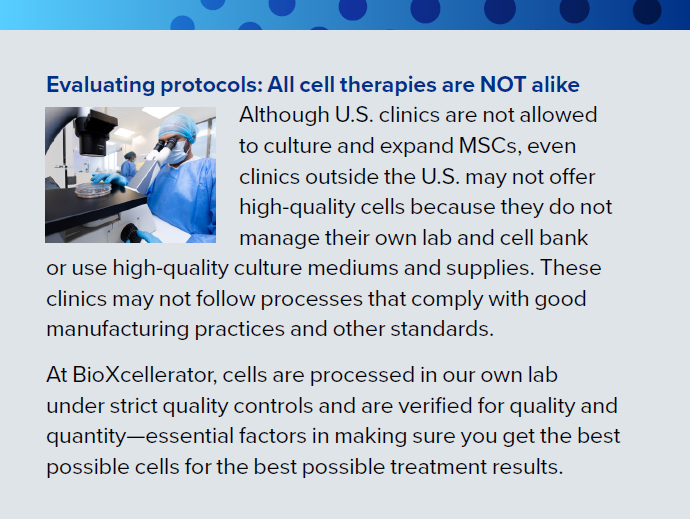
* The maximum number of cells administered per treatment is typically not more than 1 million cells per a kilogram pound of body weight. BioXcellerator protocols are customized for each patient based on their unique conditions.
Current FDA regulations limit the use of umbilical cord derived-MSCs in the U.S. because they are not permitted to be expanded or multiplied from their original state. This expansion process allows us to provide patients tens of millions of cells per treatment* to extend the potency and viability of cells.
Conditions and diseases we treat at BioXcellerator
Find out if stem cell therapy can help you improve your health, ease pain, and more.
Ask about our advanced treatments for these conditions and diseases:
- Ligament and tendon tears
- Joint injuries
- Acute muscle injuries
- Degeneration (lost cartilage)
- Tendonitis
- Bursitis
- Healing from surgeries
Shoulder and elbow injuries
- Rotator cuff tears and injuries
- Labral tears or degeneration
- Tennis elbow/lateral epicondylitis
- Golfer’s elbow/medial epicondylitis
 Hip injuries and pain
Hip injuries and pain
- Fractures
- Ligament strains and tears
- Hip joint arthrosis
Knee injuries and pain
- Anterior cruciate ligament (ACL) sprain/tear
- Medial collateral ligament (MCL) sprain/tear
- Posterior cruciate ligament (PCL) sprain/tear
- Meniscopathy (torn meniscus)
- Runner’s knee
 Ankle and foot injuries
Ankle and foot injuries
- Fractures
- Ligament strains
- Plantar fasciitis
- Achilles injuries and chronic achilles tendinosis
Wrist and hand injuries
- Fractures
- Ligament strains
- Carpal tunnel syndrome
Chronic Pain

- Arthritis
- Tendinitis
- Chronic injuries
- Chronic inflammation
- Degenerative conditions
- Lost cartilage
- Osteoarthritis/degenerative joint disease
Joint pain
- Knee pain
- Shoulder pain
- Hip pain
- Elbow pain
- Ankle and foot pain
- Wrist and hand pain
Other conditions

- Carpal tunnel syndrome
- Plantar fasciitis
- Fibromyalgia
- Neuropathy
- Radiculopathy
Autoimmune and Degenerative Conditions

- Osteoarthritis/degenerative joint disease
- Ankylosing spondylitis
- Post-treatment Lyme disease syndrome (PTLDS)
- Sjogren’s syndrome
- Systemic lupus erythematosus
- Juvenile rheumatoid arthritis
- Other autoimmune conditions recommended by medical specialists
Spine and Disc Conditions and Back Pain

- Back pain and injuries
- Neck pain and injuries
- Lumbar pain and injuries
- Herniated discs
- Bulging discs
- Degenerative disc disease
Neurological Conditions
- Stroke
- Spinal cord injury
- Multiple sclerosis (MS)
- Peripheral neuropathy
- Cerebral palsy
- Autism (Autism Spectrum Disorder)
- Brain injuries such as TBI and CTE
- And other disorders
Gastrointestinal Disorders
- Ulcerative colitis
- Crohn’s disease
Spinal Cord Injuries (SCI)
- Incomplete SCI
- Complete SCI
- Quadriplegic patients
- Paraplegic patients
- Traumatic spinal cord injuries

Even more overall health benefits
Optimize health throughout your entire body
Although patients visit our clinic for treatment of a wide range of diseases, conditions, and injuries, many report “feeling better” in a way that extends beyond relief from specific symptoms.
- Because MSCs secrete a wide range of specific molecules that communicate with other cells in the body, stem cell therapy can help:
- Reduce systemic inflammation by regulating cytokine release and other inflammatory responses.
- Improve immunity by regulating cytokine release and other inflammatory responses.
- Promote tissue remodeling and cell turnover, and by slowing cellular aging by reducing damage to DNA telomeres
- Improve appearance by increasing collagen production that can improve skin health and fade wrinkles and blemishes
Many patients report improved mental clarity, more endurance and performance during exercise and athletics, and a boost to overall energy.
Indeed, some of our patients visit our clinic on an ongoing basis for treatment to optimize overall health—even if they are not suffering from a specific disease or injury.
That’s because many of the properties of the cells we use, and other treatments available, can help people not only live longer but enjoy more out of life—long after typical retirement age.
Many patients report improved mental clarity, more endurance and performance during exercise and athletics, and a boost to overall energy.
Precise treatment protocols for specific conditions
Advanced technology to infuse high-potency cells directly to sites of disease and injury

Even though we take great care to identify, culture, expand, and test the cells we use for treatment, how cells are infused into the body can significantly enhance treatment outcomes.
At some clinics, all patients receive cells through an intravenous (IV) drip. We provide similar therapies, but for patients with specific injuries or conditions, we also inject cells directly to these sites—taking advantage of advanced ultrasound and fluoroscopy to guide cells precisely to injured tissue.
Our treatment procedures include:
- Intraarticular injections
- Intramuscular injections
- Perineural injections
These injections are indicated for patients with specific joint and nerve conditions and are performed by medical specialists. Local anesthesia is not required.
- Intrathecal injection into spinal canal
- Intradiscal injection into spinal discs
- Facet and disc injection into vertebral discs and facets
These injections are performed by physicians and can be more complex procedures, so local anesthesia may be indicated. For these types of injections, a physician will use imaging technology to direct the treatment into precise targeted areas based on each patient’s specific medical condition.
In some cases, treatment includes the use of BioXgel™, our proprietary platelet-rich plasma product that is used to support damaged areas in the body in a way that can make treatment more effective.
- Intradermal application
This procedure applies therapy directly into the dermal layer of the skin. In some cases, BioXgel is used to support specific areas and improve treatment potential.
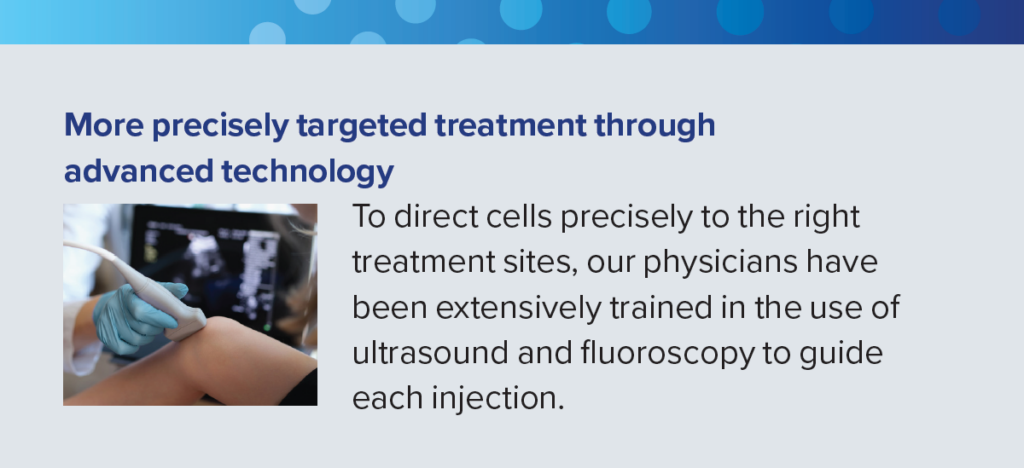
Exacting standards to assure high quality
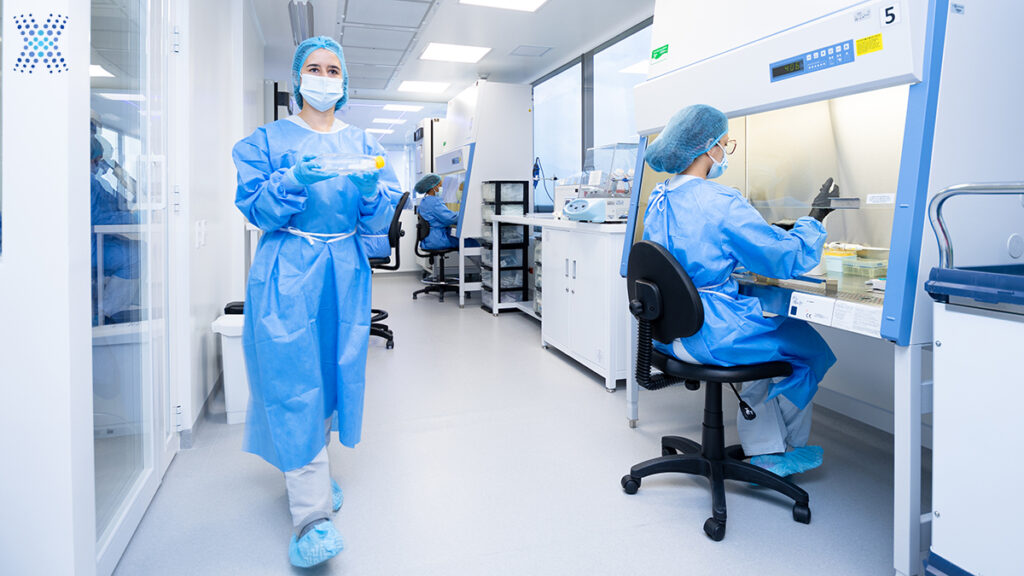
State-of-the-art clinic and lab with attention to every detail. Meeting the highest standards for quality care.
At BioXcellerator, our entire team remains focused on meeting—and exceeding—global standards to produce high-quality cells, provide safe treatment, and give patients accurate information on the protocols used to treat their condition. We take pride in our compliance with all relevant guidelines, even though our clinic is located outside the U.S. Our clinic and laboratory have been designed to meet strict standards, including:
- Recognized ISO standards that cover safety, air quality, and processing infusions that contain human cells.
- GMP standards to assure compliance with recognized good manufacturing practices.
- All standards required by local government agencies such as COFEPRIS and INVIMA (Mexico and Colombia’s regulatory authorities that are similar to the FDA in the U.S.).
In addition to our attention to compliance, we also provide detailed quality reports to each patient after treatment to document:
- Date of receipt of umbilical cord used for cell processing and date of birth of donor
- Type of cells used in your therapy
- Code to retrieve results of microbiological tests performed on cells received during treatment, including:
- Culture for microorganisms (bacteria)—negative
- Direct (KOH) and fungal culture—negative
- Mycoplasma PCR—negative
- Endotoxins—negative
- Number of cells received (10% more than planned for treatment to account for cells that may not be viable)
- Number of passages used during the culture and expansion process to ensure cells remain undifferentiated and in optimal condition for the best potential results
- Tests are also performed for other potentially transmissible infections such as HIV, hepatitis B, hepatitis A, hepatitis C, syphilis, cytomegalovirus, toxoplasmosis, and human lymphotropic virus to ensure cells you receive are free from infection
- Karyotype to rule out potential chromosomal genetic alterations in the donor to guarantee the proper functioning of the cells
- Images that show three cellular characteristics of most importance, including fibroblastoid morphology (elongated), adherence to the culture dish, and differentiation into:
- Osteoblasts (bone cells). Chondroblasts (cartilage cells)
- And adipocytes (adipose tissue cells). Flow cytometry report showing CD 73 and CD 90 evaluations that confirm cells as mesenchymal stem cells from Wharton’s jelly
- Cell viability data to assure that for every 100 cells you receive, more than 90 of them will be alive and will perform their paracrine functions in your body.
And while we take pride in meeting global standards for scientific excellence, we are also dedicated to providing clear explanations, making sure your travel to our clinic is convenient, and helping you (and your new cells) see improved health in the weeks and months after treatment.
Additional treatments for even better health
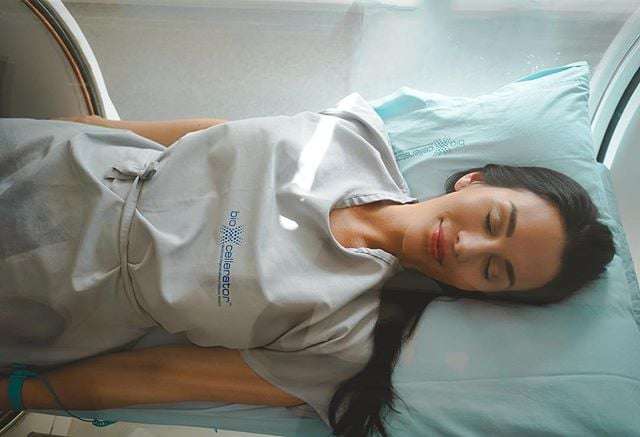
Making stem cell therapy even more effective and life-enhancing
While stem cell therapy can be highly effective, other regenerative medical
treatments we offer can enhance patient outcomes:
- Hyperbaric oxygen therapy (HBOT)
- Bioregulatory medicines: low doses of medications that stimulate natural healing processes, detoxify the body, and create an optimal environment to help make treatment as effective as possible
- Orthomolecular medicines: vitamins and amino acids that promote regeneration and revitalization of body tissues using IV drip may be appropriate therapies to:
- Improve skin
- Enhance circulation
- Help maintain appropriate body weight
- Improve vitality and memory
- Support digestive function
- Improve metabolism and hormone balance
- And more
Backed by scientific research
Scientific citations and references
You don’t need to be a scientist to benefit from stem cell therapy, but many patients appreciate reviewing some more technical information about the science of stem cell therapy.
You can review scientific studies and other articles on our website (www.BioXcellerator.com) that support the science of regenerative medicine, and our approach to treatment—as well as demonstrate that there is strong scientific support for stem cell therapy and other treatments we provide.

A global reputation for expertise
Meet our team of leading scientists and others dedicated to innovation and compassionate care.
More than 60 professionals are dedicated to patient care and advanced research.
Frequently asked questions
1. Why is BioXcellerator stem cell therapy more effective than treatments at other clinics?
Our proprietary Signature Cells process is designed to provide treatment with cells of high potency and purity.
We start with cells derived from Wharton’s jelly in donated umbilical cords, which are known for their high potential to stimulate healing. Next, we test these cells based on the proprietary protocol our scientists have developed to screen for specific markers that indicate:
- High levels of anti-inflammatory properties
- The best potential to modulate your immune system
- More potential to stimulate healing and regenerate damaged tissues
Our advanced Signature Cells process helps create high-potency cells that work more quickly and effectively to promote healing, reduce inflammation, and regenerate damaged tissues.
2. Why are these therapies not available in the U.S.?
Current FDA regulations limit the number of cells available for treatment because they cannot be cultured and expanded. The expansion process allows us to provide patients tens of millions of cells per treatment, which can extend treatment benefits.
3. When can I expect to feel better after treatment?
This depends on the specific condition that’s being treated and varies from patient to patient. For some conditions, patients may report feeling better after a few days. For other conditions—degenerative disc disease and multiple sclerosis, for example—it may take three to 12 months before symptoms are reduced.
Because patient outcomes can also vary based on nutrition and lifestyle choices, it’s important to follow post-treatment recommendations from our physicians. Doing so can help make stem cell therapy as effective as possible even weeks and months after treatment. Contact us to discuss your specific condition and health goals.
4. How do I know if stem cell therapy is right for me?
Your Patient Advocate will consult with our team of expert scientists and physicians to review your case and evaluate stem cell therapy as an appropriate treatment option. Although stem cell therapy can help alleviate many conditions, it may not be suitable for treating some specific disorders.
Learn more by requesting a free consultation here. It’s easy and confidential. And we’ll be happy to answer all of your questions about stem cell therapy and how our treatments may be able to help you.
5. How does stem cell therapy work?
Stem cells are the body’s own natural source of new cells to replace older, damaged, and diseased cells. Unfortunately, the number of new stem cells our bodies produce declines as we age. Stem cell therapy helps the body use its own stem cells and natural healing processes to create an optimal environment for the body to heal itself, reduce inflammation, regenerate damaged tissue, and relieve pain.
6. How does stem cell therapy work to alleviate chronic pain?
Stem cell therapy helps the cells in your body by signaling them to regenerate or repair damage and reduce inflammation. This signaling process “teaches” your own cells how to heal themselves—a process that can extend for many months and even years after treatment.
7. Can I expect any pain from my procedure?
Depending on the condition to be treated, the procedure to be performed will change, some being more or less invasive; the degree of pain will depend on factors such as pain threshold, type of application administered, and condition treated. Some patients have little to no pain, while others require pain medication to be administered by the clinic’s physicians.
8. Is stem cell therapy safe?
In general, yes. Research shows that stem cell therapy offers a high level of safety with little risk of side effects, but there may be exceptions. BioXcellerator takes great care to review each patient’s medical history before treatment. If any issues raise concerns about safety, we’ll help address them before treatment.
9. Are BioXcellerator procedures covered by insurance?
Typically, no. If your insurance company does not cover stem cell therapy.
10. Do you collect data on each patient’s progress?
Absolutely. The data we collect helps us track the safety and efficacy of our treatments so that we can improve our protocols. It also helps us collaborate with the scientific and academic communities on various clinical trials, studies, and white papers.
11. How often do you follow up with patients?
This varies based on the condition being treated. All patients are contacted two weeks after treatment. Additional contacts may be made approximately every three months and up to one to two years after treatment—and we appreciate the feedback from our patients.
12. Do you track results on patient outcomes and treatment success rates?
Yes. We track patients’ outcomes through follow-ups using software that saves and analyzes all the paraclinical and clinical data, from three to 18 months after treatment. We also regularly publish video testimonials of our patients.
Advanced treatments to improve overall health and quality of life
The BioXcellerator team and I are dedicated to serving you, providing the best and most advanced treatments available, and above all else delivering remarkable results through our therapies to.
If you have any questions at all, please email PatientAdvocate@BioXcellerator.com or call 1-888-567-2469.

